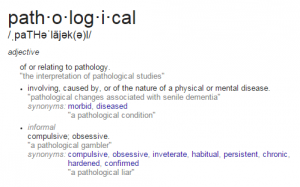
Therefore, a phobia is the result of an individual’s fear of expressing forbidden impulses. Phobias are a flight from the anxiety aroused by forbidden impulses and utilize avoidance to protect the individual from temptation arousing situations. They are: anxiety about the loss of love, anxiety about loss of the object (caretaker), castration anxiety and super-ego or social anxiety. Anxiety signals danger and according to Freud there are several situations that cause danger. Freud’s theory of anxiety (1926) was that anxiety arises in response to dangerous situations. Below is a brief review of current models of understanding fears and phobias.įrom the psychoanalytic perspective, Freud wrote some of the first explanations of fear and anxiety. Even though fearfulness and not phobias are being studied here, the origins of both fears and phobias are similar and since more research has been done on the etiology of phobias, both models will be used to understand the etiology of fears. However, most research has been done on the etiology of phobias. There is some psychoanalytic work done on fears. The etiology of fear has been much previously studied from the viewpoints of behaviorism, genetic predisposition models and other cognitive or social learning models. Previous studies on the etiology of fear and phobias. It is fearfulness and not phobias that will be examined by this study, but it is helpful to distinguish the extreme intensity of a specific phobia from general fearfulness.

A phobia, unlike a fear is: excessive, cannot be reasoned away, beyond voluntary control, maladaptive, not age specific, persists over time, and leads to avoidance of the feared stimuli. 2) Miller, Barrett and Hampe (1974) proposed criteria for phobias.

Strasner (1987) defined fear as “an emotional reaction (rational or irrational) to an object (animate or inanimate) or event that is associated with increased risk of danger and also unpleasantness, agitation and a desire to hide, flee or seek protection.” (p. 68) Franklin Delano Roosevelt famously stated during World War II, “We have nothing to fear but fear itself.”

In the 17th century, Robert Burton (cited by Herbert, 1975) commented on the effects of phobias: “They that live in fear are never free, resolute, secure, merry, but in continual pain….No greater misery, no rack, no torture like unto it.” (p. The Romans also used the term phobia, calling fear of water “hydrophobia.” Hippocrates describes two phobic patients that he treated who were “beset with terror” and he himself was described by others as agoraphobic. Kavilas (1988) provides a brief review of the history of the term “phobia.” Phobos was a Greek god and the Greeks painted an image of him onto their war masks and armor in order to instill terror in the heart of the enemy. The word phobos means “fear,” “terror,” “panic” or “flight.” A phobia is an intense, severe and persistent fear. According to Herbert (1994), the origin of the word “phobia” is in ancient Greek mythology. The word phobia has been used for thousands of years in different ways. History and Definition of the Terms “Phobia” and “Fear.” Fears in their extreme form are called phobias.


 0 kommentar(er)
0 kommentar(er)
